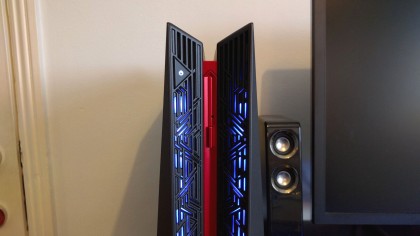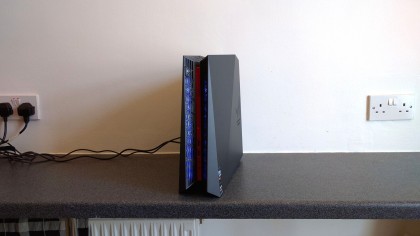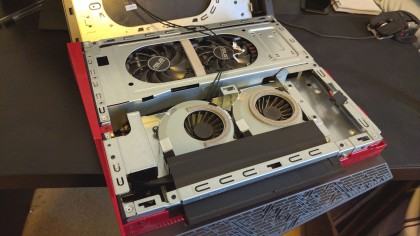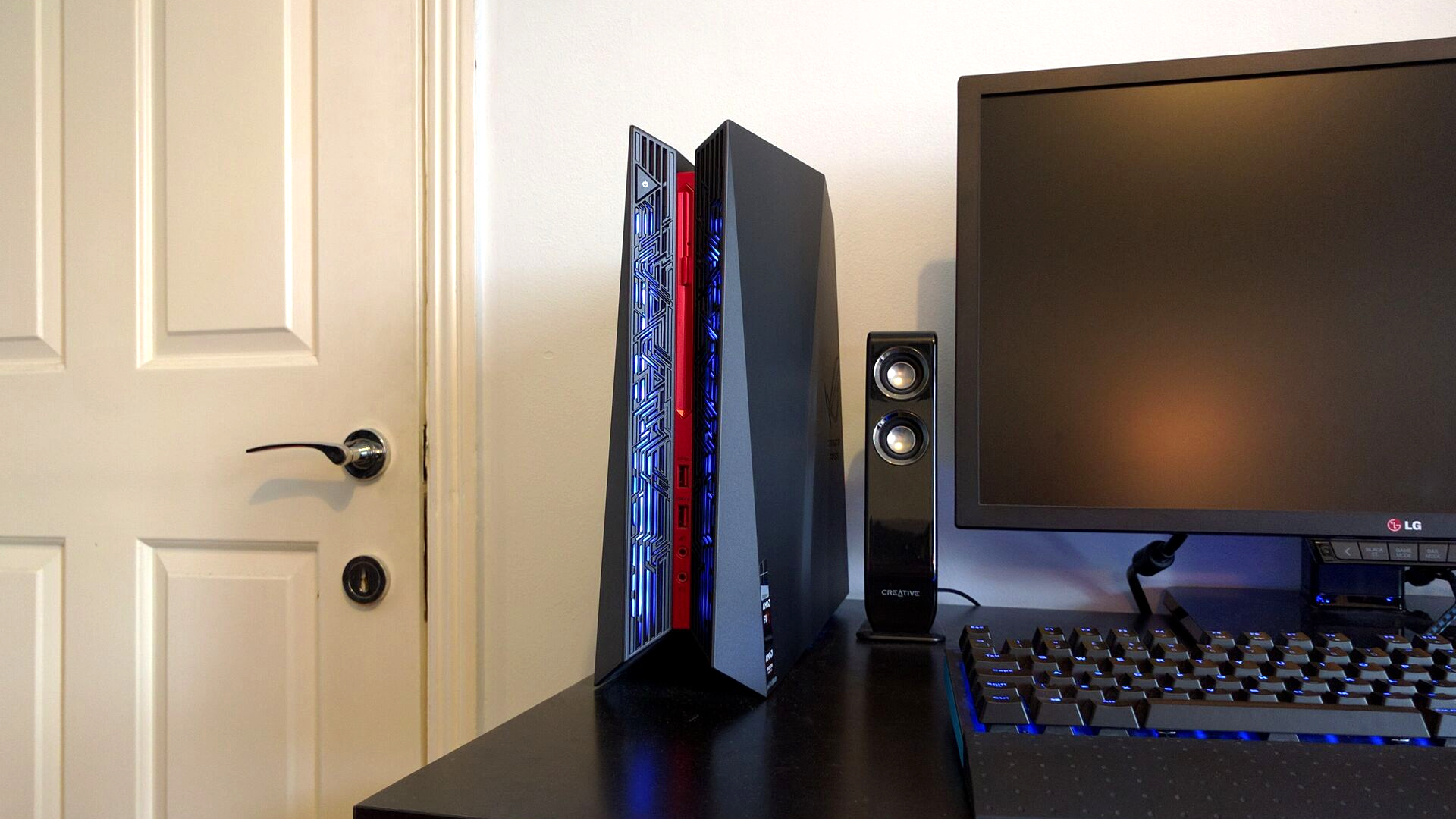TechRadar Verdict
Inside the ROG G20BM's sleek case lies some thoroughly underpowered hardware, resulting in a machine that looks nice but isn't particularly good for gaming.
Pros
- +
Small but well-equipped case
- +
Upgradeable, with the right tools
- +
Spacious HDD
Cons
- -
Unimpressive 1080p performance
- -
Fans are loud
- -
Questionable value
Why you can trust TechRadar
When most people think of gaming PCs, I suspect they imagine models like the Acer Predator G3 – huge, floorboard-straining super-rigs.
The Asus ROG G20BM aims to be different — a desk-friendly machine that, like the Alienware X51 — opts for a small form factor (SFF) case that means it's hardly any bigger than a games console. It has a much narrower footprint than the kind of flatter, wider cases often favored by mini-ITX builds.
With its angular edges, the G20BM certainly has a look of Sony's PS4 about it.

Asus hasn't completely rejected typical gaming PC excess, mind you — the Mayan-inspired patterning, customizable lighting and angular lines make the G20BM look like an alien obelisk fallen to Earth.
The big squeeze
The G20BM's reduced bulk comes at a couple of costs. The first is the literal cost: it will set you back $1,040 (£750 in the UK, which is around AU$1,460), far more than the sum of its lower-end parts.
That's £50 (around $70/AUS$95) more than the Predator G3, which doesn't look anywhere near as good on your desk but packs more of a punch for its asking price.

The ROG G20BM is a huge pain to upgrade. Components are stacked on top of each other and held in place with numerous tiny screws. To swap out the HDD, you have to unscrew and remove the GPU before being able to access the drive, while changing the RAM demands that the entire main cooling unit be unfastened.
There's also no room for an internal power supply (PSU), and for some reason the graphics card is fed electricity through a separate cable. The solution is a faintly ludicrous double-decker power brick that needs two sockets to function, something that could give cable-tidying obsessives heart palpitations.

The internal fans are pretty small too, and so to shift enough air to keep the ROG G20BM cool, they need to ramp up to full speed and stay there – creating an awfully loud, high-pitched whirr.
